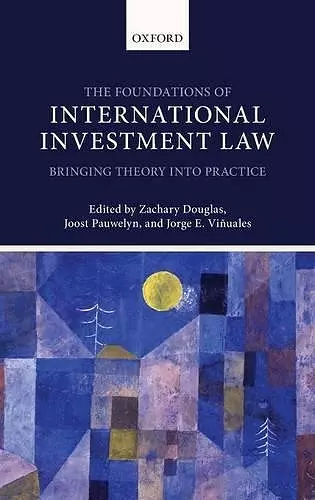The Foundations of International Investment Law
Bringing Theory into Practice
Jorge E Viñuales editor Joost Pauwelyn editor Zachary Douglas editor
Format:Hardback
Publisher:Oxford University Press
Published:1st May '14
Currently unavailable, and unfortunately no date known when it will be back

International investment law is one of the fastest growing areas of international law. It has led to the signing of thousands of agreements, mostly in the form of investment contracts and bilateral investment treaties. Also, in the last two decades, there has been an exponential growth in the number of disputes being resolved by investment arbitration tribunals. Yet the legal principles at the basis of international investment law and arbitration remain in a state of flux. Perhaps the best illustration of this phenomenon is the wide disagreement among investment tribunals on some of the core concepts underpinning the regime, such as investment, property, regulatory powers, scope of jurisdiction, applicable law, or the interactions with other areas of international law. The purpose of this book is to revisit these conceptual foundations in order to shed light on the practice of international investment law. It is an attempt to bridge the growing gap between the theory and the practice of this thriving area of international law. The first part of the book focuses on the 'infrastructure' of the investment regime or, more specifically, on the structural arrangements that have been developed to manage foreign investment transactions and the potential disputes arising from them. The second part of the book identifies the common conceptual bases of an array of seemingly unconnected practical problems in order to clarify the main stakes and offer balanced solutions. The third part addresses the main sources of 'regime stress' as well as the main legal mechanisms available to manage such challenges to the operation of the regime. Overall, the book offers a thorough investigation of the conflicting theoretical positions underlying international investment law, testing their worth by reference to concrete issues that have arisen in the jurisprudence. It demonstrates that many of the most important practical questions arising in practice can be addressed by a carefully dosed resort to theory.
Overall, The Foundations of International Investment Law: Bringing Theory into Practice achieves its aim of linking theory to practice in order to resolve some of the key questions regarding the operation of IIL and investment arbitration. The collection of works is well structured with a clear focus. The quality of the contributions is high, evidenced by original contributions on a number of controversial and topical issues. This book will serve as a useful reference volume as IIL and investment arbitration develop, as their theoretical foundations will ultimately determine the direction in which IIL and investment arbitration will grow. * Edward Guntrip, The British Yearbook of International Law *
The aforementioned chapters by Pauwelyn and Viñuales add further substance to our present discussion
by challenging nowadays outdated explanations for the readiness of states to participate in investment law by concluding and becoming a party to BITs and other investment agreements or daring to address the big elephant in the room behind the general discussion on fi nding the correct path between the right to regulate and the need for investment protection: What role for sovereignty and how, to begin with, can sovereignty be understood in this context? â Ralph Janik, Austrian Review of International and European Law
ISBN: 9780199685387
Dimensions: 240mm x 163mm x 39mm
Weight: 1048g
586 pages